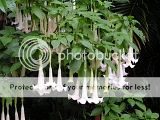Many new gardeners unintentionally pick plants for their gardens that are doomed for failure. Even if the plant isn't doomed, the placement of it may doom it. They may be looking for the most unique plant they can find or simply the most beautiful. Unique plants are fun in gardens. They are conversation starters and allow for some serious bragging rights, not to mention the "ooooh" and "aaaaah's" from friends and family. Unless you are a seasoned gardener, however, I would start with the basics.
Generally speaking, the reason the plant may be unique is that it is either meant, in our wonderful climate, as an annual or patio plant, or they are so difficult to grow that they don't sell well. This is not to intend that you should not buy or grow unique plants, because that is simply the part of the fun of gardening. Just make sure you read the tags or do some online research before you plant them.
Some of the easiest plants to grow for Northern Gardens are also the most common. Makes sense, right? They are all beautiful plants, and when combined right they make an amazing Northern Garden. And you can always add your favorite annuals and exotic plants for the summer.
Echinacea
Commonly known as Cone Flowers
 These prairie beauties add a tall burst of color from Summer through early Fall. Averaging about three feet tall, they should be placed in the back of the border or center of an island garden.
These prairie beauties add a tall burst of color from Summer through early Fall. Averaging about three feet tall, they should be placed in the back of the border or center of an island garden.
Echinacea are drought tolerant and drop their own seeds allowing them to spread naturally. They are easily splittable in the Spring or Fall and transplant well. If started from seed, they will bloom the second year, so don't get discouraged.
Most commonly found in classic shades of purple and pink, they are also available in more whimsical shades of green, orange, crimson, yellow and white. Even more varieties include Delight Coneflower, which has a "fluffy" top, Double Decker Coneflower, which has a small bloom on top of the main bloom, or Green Envy, which showcases thicker petals in green with purple accents.
Plant Echinacea in full sun.
Rudbeckia
Commonly known as Black Eyed Susan
 Black Eyed Susans are actually a coneflower of a different genus. You will find Rudbeckia varieties along ditches and in undisturbed fields in the Plains.
Black Eyed Susans are actually a coneflower of a different genus. You will find Rudbeckia varieties along ditches and in undisturbed fields in the Plains.
The common nursery varieties are typically medium sized plants with dark centers and yellow petals. The "fun" varieties of Rudbeckia include Prairie Sun or "Green Eyed Susan," Cherry Brandy with it's burgundy colored petals, and Green Wizard which shows off a few thin green petals and a tall dark center.
Like Echinacea, Rudbeckia are drought tolerant, splittable and easy to grow from seed. The are also full sun perennials.
Sedum
Commonly known as Stonecrop
There's no end to the variety available here. And they don't get any easier to grow than this. There are several annual varieties as well, so make sure that you read the tag when purchasing Sedum.
Because Sedum are succulents they are extremely drought tolerant. Their thick waxy stems and leaves hold moisture very well. The most common varieties, such as Autumn Joy bloom in the fall, while many of the groundcover varieties will bloom in the summer.
Foliage and flower colors vary widely. Some will do ok in part shade, but full sun is your best option for growing Sedum.
Here are some of my favorites:
 |
Dragon's Blood
|
 |
| Postman's Pride |
 |
| Green Mantle |
Monarda
Commonly known as Bee Balm
 Monarda is a member of the mint family and has a strong fragrance to prove it. Monarda will work very will in your full sun garden with Rudbeckia, Cone Flower and Sedum. There are several varieties available and in many colors. The shorter varieties are about a foot tall, while the stems of some of the taller varieties can reach up to three feet.
Monarda is a member of the mint family and has a strong fragrance to prove it. Monarda will work very will in your full sun garden with Rudbeckia, Cone Flower and Sedum. There are several varieties available and in many colors. The shorter varieties are about a foot tall, while the stems of some of the taller varieties can reach up to three feet.  From fucsia pink to pastel purple, you can easily find the color you need. Some varieties get double decker, triple decker or even quadruple decker blooms!
From fucsia pink to pastel purple, you can easily find the color you need. Some varieties get double decker, triple decker or even quadruple decker blooms!Bee Balm spreads quickly (but not quickly enough to take over), and is easy to split. The root system does not go terribly deep which makes them very easy to handle.
Other Trusty Perennials for the Northern Gardener
Need to add more? Try Shasta Daisies, Day Lily, Iris, Hosta, and Coreopsis!
If there is another plant you'd like to know more about, simply leave a question in the question box on the right~!

 Morning is the best time to harvest Chamomile, just after the buds have opened and once they are dry after morning dew. Simply pinch off the flower heads and place in a dry, dark, hot place to dry.
Morning is the best time to harvest Chamomile, just after the buds have opened and once they are dry after morning dew. Simply pinch off the flower heads and place in a dry, dark, hot place to dry. 































